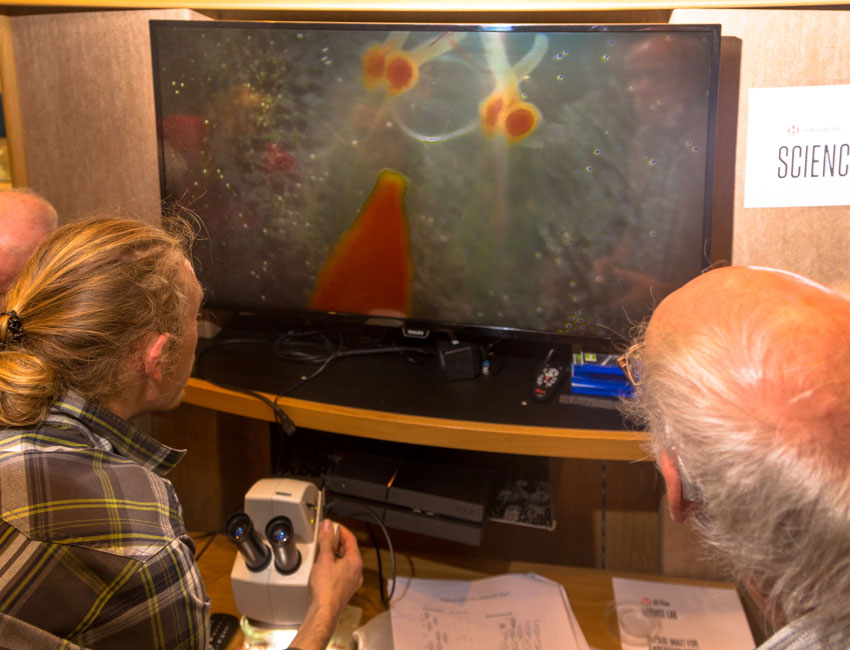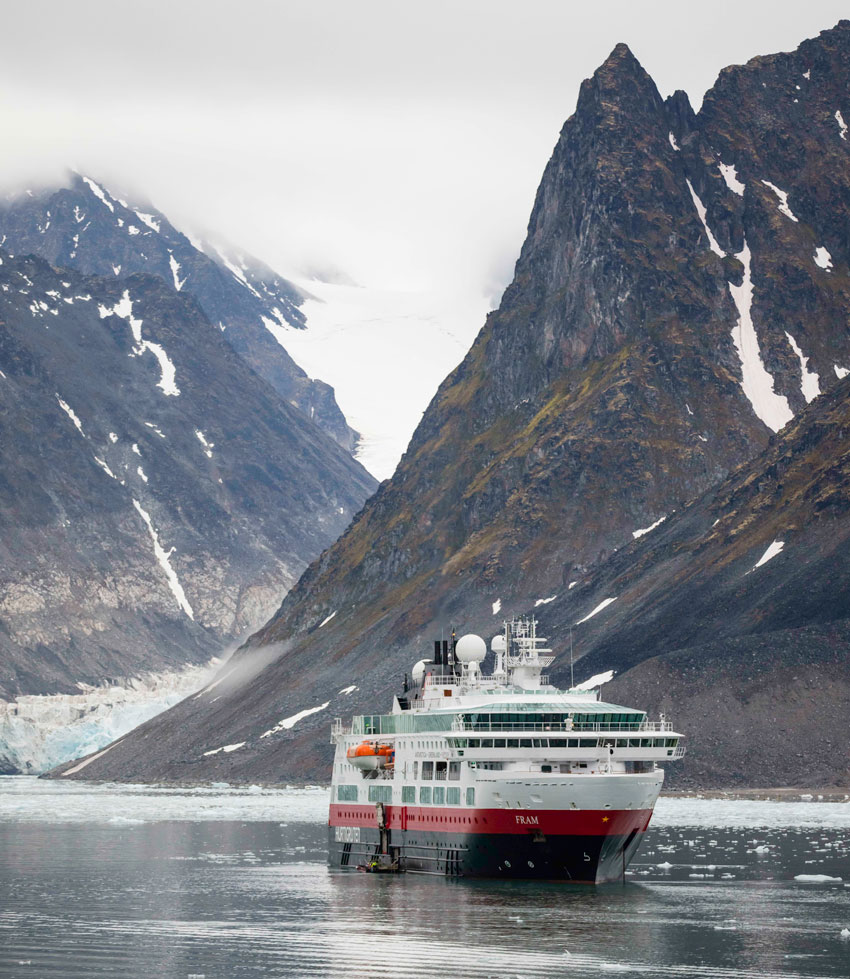Can cruise tourists become citizen scientists?
The project CRUISE#SCIENCE developed citizen science methods for research dissemination and active learning on board circumnavigating expedition ships in Svalbard. The results of the project, headed by the Department of Arctic Biology at UNIS, show that this kind of citizen involvement has added value for both UNIS and the cruise operator.

Tourists from Hurtigruten landing on a beach in Svalbard. Photo: Børge Damsgård/UNIS.
Text: Eva Therese Jenssen
Cruise tourism in Svalbard has increased in recent decades. Many of the guests have high expectations for activities, experiences and learning outcomes. The guests on the ships get a unique impression of the nature and culture of the Svalbard archipelago.
But can Hurtigruten´s expedition ships and their guests also be used to collect scientific data in Svalbard? How can such a sampling be done with citizen science approach, in order to improve the guest´s understanding of polar research methods? These were the questions UNIS professor Børge Damgård and his colleagues had in 2017, when they applied for research funding from the Svalbard Environmental Protection Fund.
– This was a unique possibility for us to join forces with a large tourist operator in Svalbard, so we could learn from each other how to disseminate knowledge about the Arctic nature, says Børge Damsgård.

Guests were involved in authentic sampling of, for example, seawater quality and plankton communities. The samples are part of a time series conducted by UNIS in Svalbard. The sampling was linked to demonstrations of equipment and methods, and to more theoretical lectures on board.
– I was so happy the first time I heard one of the foreign guests say that this was the first time she really understood the climate changes, says Damsgård.
The project aimed to increase the understanding of research methodology, for example in the climate debate, by bridging the gap between science and ordinary people. Citizen science research is thus not only a way to increase knowledge and awareness of untouched nature in Svalbard, but also to reduce potential mistrust of scientific knowledge.

UNIS conducted a total of 11 trips around Svalbard during 2018 and 2019, took nearly five hundred scientific samples at about hundred measuring stations, and organized more than sixty demonstrations and lectures. The evaluations showed that the project provided added value for both Hurtigruten and UNIS.
– This was a good way to reduce our scientific footprints in close collaboration with the industry, and I am looking forward to working with Hurtigruten in the future, says Børge Damsgård.
